 |
||||||||||||||||
| virtual Studio | References | Workshops | Styles of Frames | History | Collection | Gallery | ||||||||||||
|
|
||||||||||||||||||
|
The process of frame making for the State Museum in Kassel, Old Masters Picture Gallery |
||
|
|
||
|
|
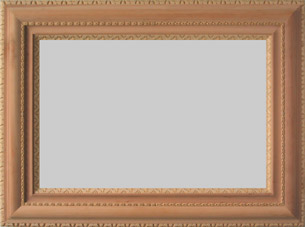 |
|
|
|
||
The ornamental gold staves The hand-carved ornamental staves are first of all soaked in glue and then primed with thin, low-viscosity black chalk (wich is in fact not black at all, but a soft stone substance, of a white, greyish or yellowish colour). After this, with a chalk base consisting of champagne chalk and glue, the ornamentations are thinly primed, care being taken to keep the angles and curves clear and sharp. The next layer consists of yellow bole, a type of specially prepared clay. Red bole, which helps determine the depth of lustre of the gold, is mixed according to the original artwork. Now the frame can be gilded with gold leaf and then polished with an agate burnisher. |
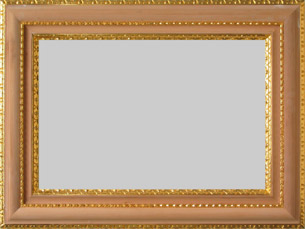 |
|
Surface treatment of the pear wood The pear wood mouldings are first of all soaked in water and then sanded down to get a smooth surface. The colour of the original frame is obtained by accurately mixing and then applying certain pigments and bonding agents. Following this are several more steps in production, which unfortunately cannot be dealt with here. |
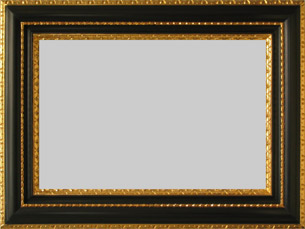 |
|
|
|
||
The tinting or patina application When the surfaces of the gold and the pear wood are finished and look like new, the tinting of the frame and patina application is begun. In doing so, the frame is aged and distressed, even going as far as applying woodworm holes and dust. To this end the customer himself can determine just how “old” his frame should be. |
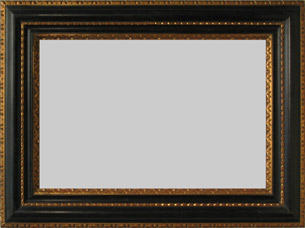 |
|
|
|
||
Mounting the picture When the tinting of the frame is finished, a creased felt strip in fitted into the rabbet, or groove, on the back of the frame so that the edges of the picture do not rest upon the wood. Both the glue and the felt consist of acid-free materials. The picture is held in place with small springs which are screwed onto the back of the frame with brass screws, and which press against the back of the picture. The springs ensure that there is some “give” if the main frame distorts. This is a very gentle method of framing a picture, because there is no jolting transferred to the artwork and the painted surface, as is the case when the picture is mounted using hammer and nails.  Back to References Back to References Back to Workshops Back to Workshops |
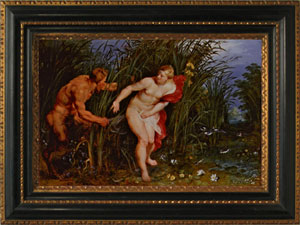 |
|